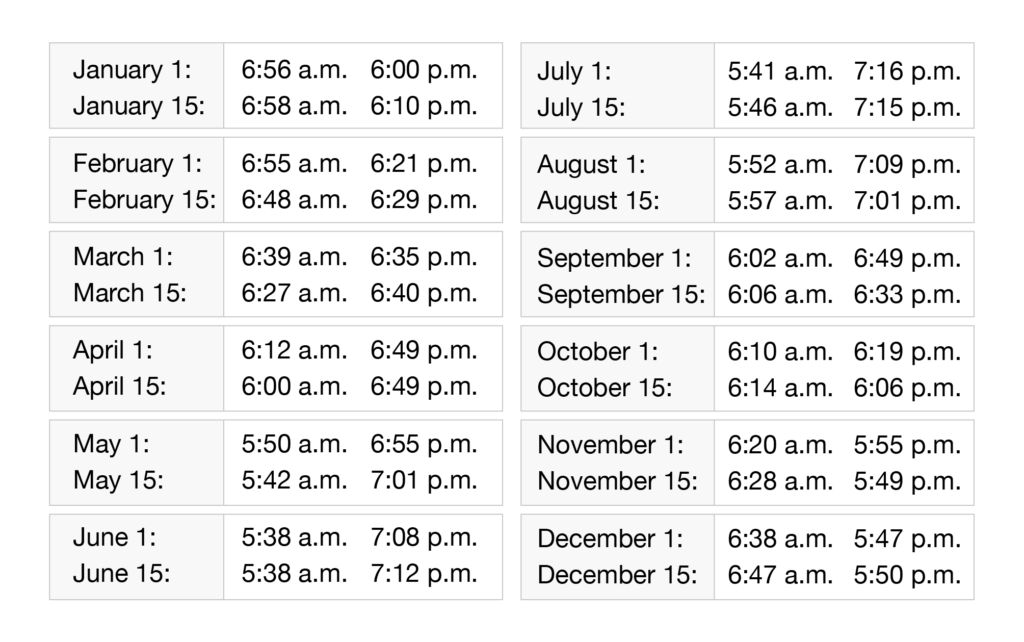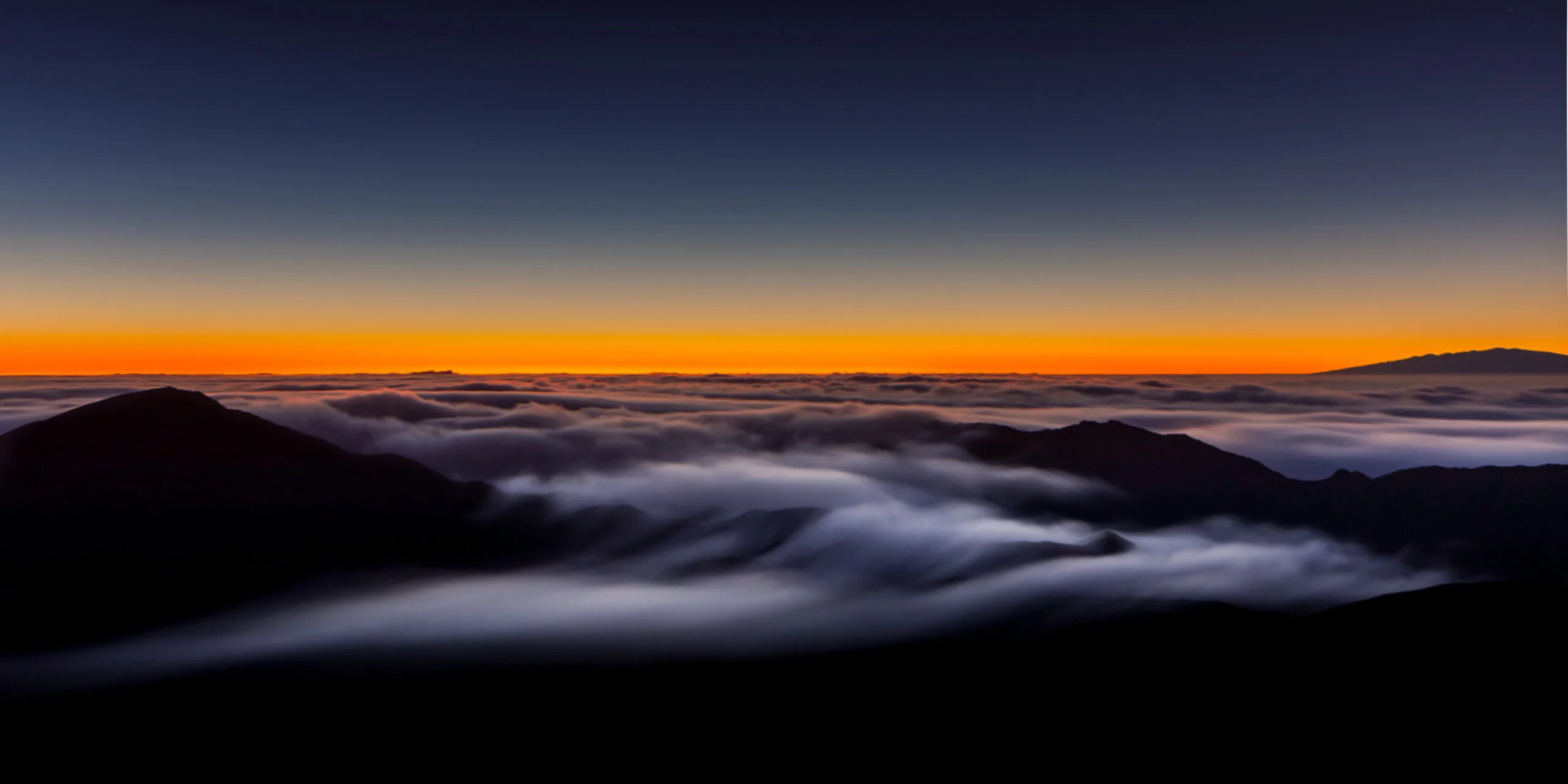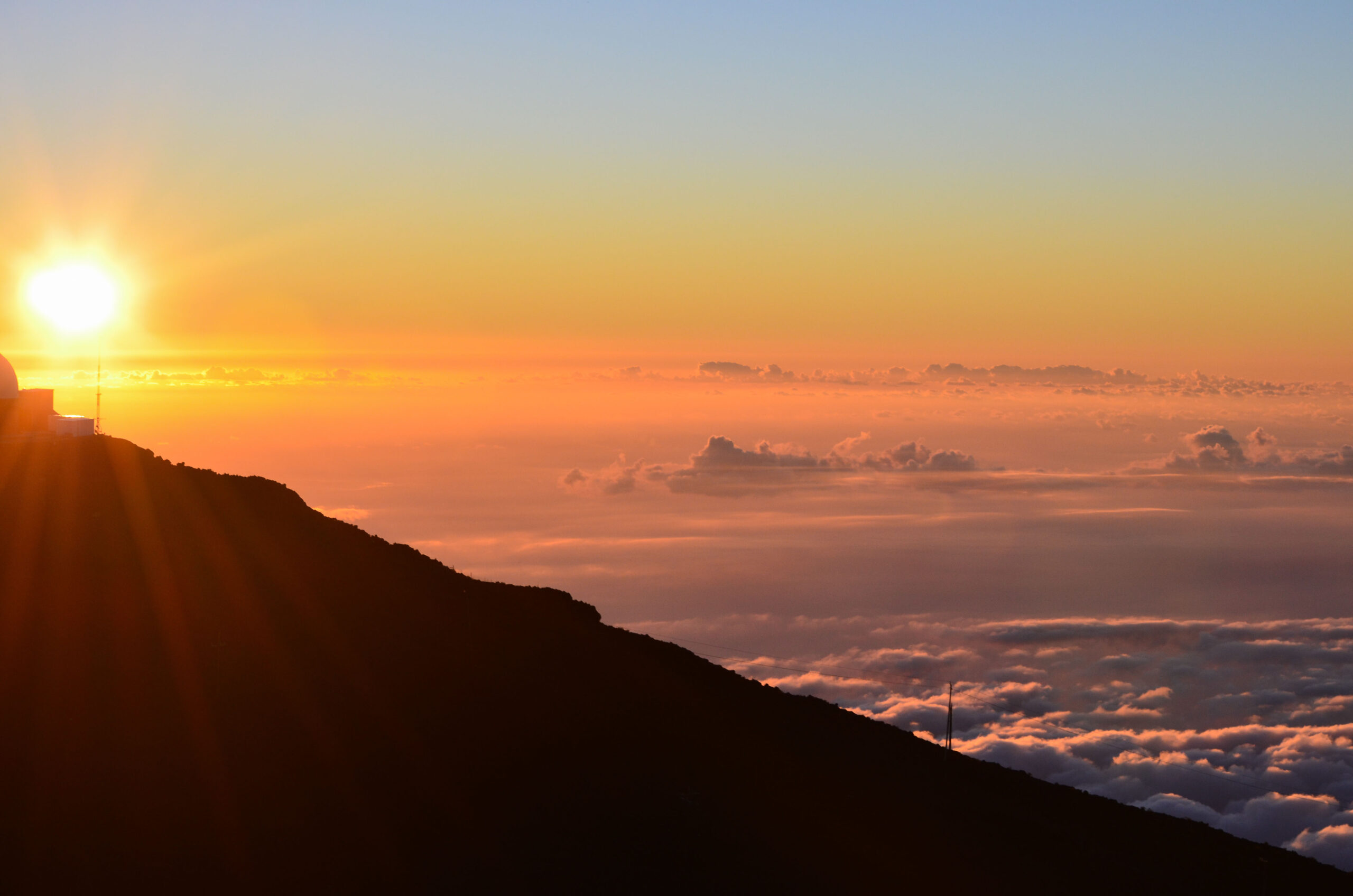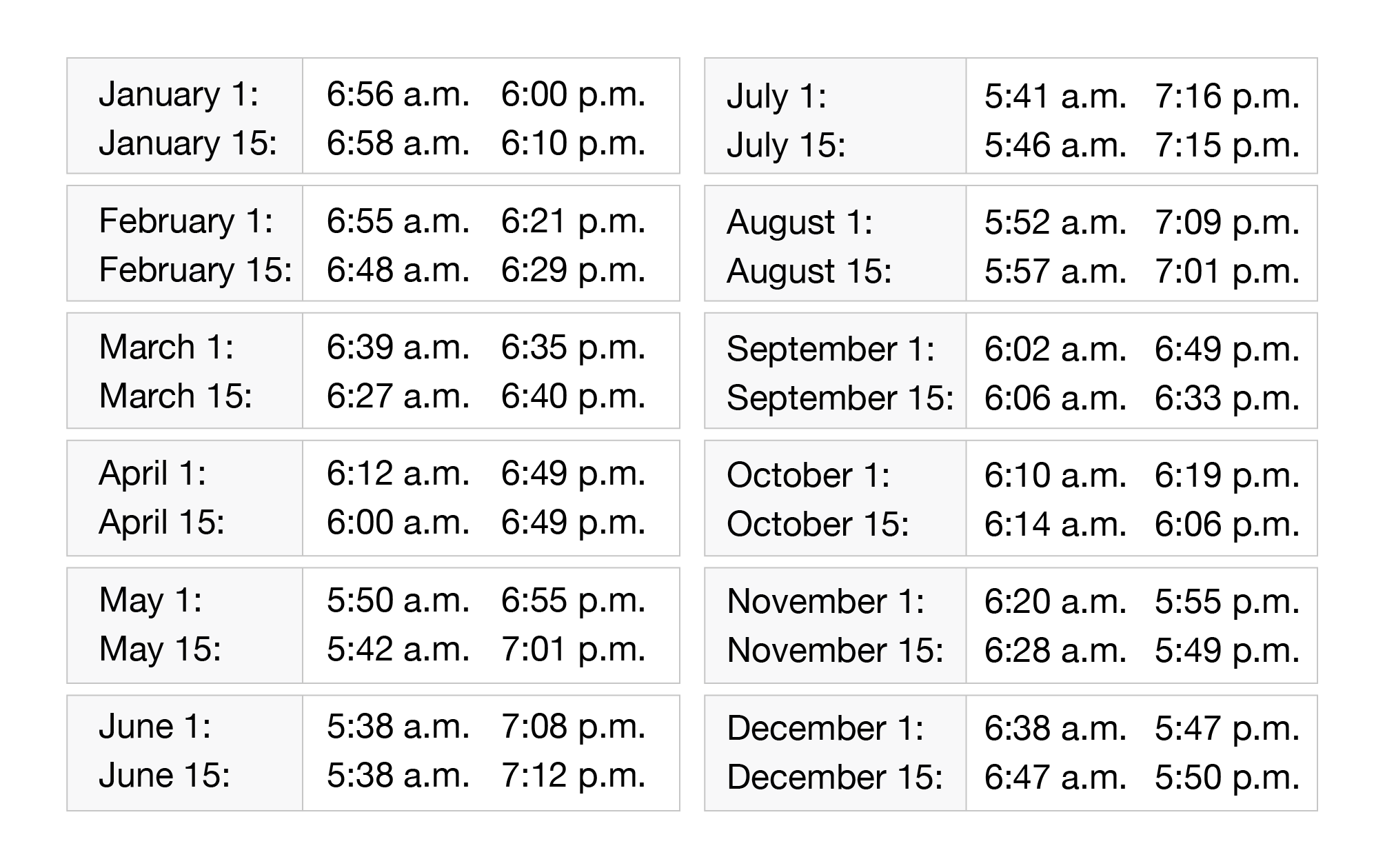Sunrise and Sunset Times on Haleakala

Haleakala National Park is located just south of the Tropic of Cancer at a latitude of about 20°N. Its location in the southern part of its hemisphere means that the amount of sunlight available year-round does not vary as much as on the mainland U.S. – a little more than an hour on each end – and that there is always a great view of the sun at the top. The following is a guide to sunrise and sunset times by season.
Spring
March, April, May
As the earth tilts on its axis to bend the northern hemisphere closer to the sun in the spring, the sunrise and sunset times become far more variable from month to month. Typically, the sun rises around 6:40 a.m. in March and 5:50 a.m. in May. You’ll have ample time to explore the park, book a zipline tour or other fun activity, and make it back to the summit for the sunset. The sunset is around 6:35 p.m. in March and 6:55 p.m. in May.
Spring is marked by gorgeous weather, heralded by blossoming plants and coverings of green appearing in areas that winter. The extraordinary beauty of spring is especially seen in the blossoming Jacaranda trees in the island’s Upcountry near Haleakalā, which fall from the branches and provide a purple carpet on the ground.
Spring break crowds are common in Hawaii, typically busiest in March through Mid-April. In general, weekdays are less crowded than weekends, though reservations to view the sunrise should still be made in advance (sunsets are typically less crowded than sunrises).
Summer
June, July, August

Summer is for sunlight, evidenced by the nearly 13 hours of daylight available for visitors to enjoy the national park. The middle of the calendar year affords the longest timeline; at the beginning of July, the sun may rise as early as 5:40 am and set as late as 7:15 pm. That means visitors will need to get up around 2:00 am, depending on where they are staying.
To make the most of your sleep during the short summer nights, consider staying in Upcountry Maui before and after your sunrise/sunset viewing. This area of Maui is less well-known but still offers plenty of wonderful amenities and activities, including delicious local restaurants and a zipline tour for the whole family.
The weather in the summer tends to be among the driest out of the whole year, especially the month of June. Visitors may find it easier to go on a hike after sunrise or find a close camping spot around sunset in the dry conditions. Don’t be fooled, though – the weather atop Haleakalā’s summit is still fairly variable, so sightseers should be prepared for cold temperatures and precipitation at high altitude.
Fall
September, October, November
The transition from summer to winter is sure and slow at Haleakala. The sun rises around 6:00 a.m. in the beginning of September and 6:30 am in mid-November; it sets around 6:50 p.m. and 5:50 p.m. on those days, respectively.
Late October and early November is less crowded on Hawaii than other times of the year. If you have the flexibility to travel around that time, you may be able to find that traveling to the summit for either sunrise or sunset is a little bit easier – there will be more parking and fewer people taking post at the best vistas at the top.
Winter
December, January, February

As you might have guessed, the winter months offer the shortest daylight hours, from almost 7:00 a.m. to about 6:00 p.m. on average. This can actually make seeing the sunrise more convenient for travelers at this time, as they are able to rise a little later and still make it to the peak on time, depending on where they stay the night before (compare this with 2:00 or 2:30 a.m. in the summer months to make it on time!).
While the views of the Haleakala sunrise and sunset are always a highlight on a trip to the islands, take note that the last two weeks of December are among the most popular to travel to Hawaii, so chances are that visiting at that time of year will mean that the viewing areas are very congested, especially on the weekends.
Winter is also prime time for rainstorms in Hawaii, which can mean more rainbows with the abundant sunlight, but also makes navigating natural areas a little bit harder. February is generally drier than the other winter months, allowing you to see more of the park in between sunrise and sunset.
Regardless of if you go to the summit peak for sunrise or sunset, you’ll be able to enjoy a stunning view of the sun’s movements as it rises and bends back down toward earth – and be able to make a wealth of memories in between at Haleakalā National Park all year round. Below is a helpful chart to use as your guide for sunrise and sunset times on Haleakala throughout the year.

*Sunrise/Sunset times calculated from information from the Bishop Museum Planetarium
About the Author: Skyline Hawaii offers unforgettable tours for the lover of natural beauty, the adventurous thrill-seeker, and everyone in between. Let us show you what the Aloha spirit is all about. For more information or to make your reservation today, visit: www.skylinehawaii.com. 